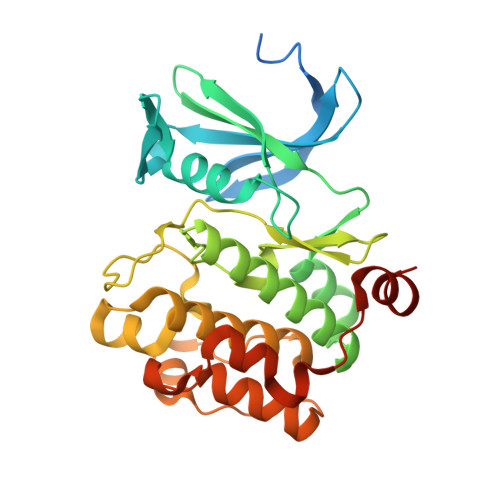Similar biological activities of two isostructural ruthenium and osmium complexes.
Maksimoska, J., Williams, D.S., Atilla-Gokcumen, G.E., Smalley, K.S., Carroll, P.J., Webster, R.D., Filippakopoulos, P., Knapp, S., Herlyn, M., Meggers, E.(2008) Chemistry 14: 4816-4822
- PubMed: 18425743
- DOI: https://doi.org/10.1002/chem.200800294
- Primary Citation of Related Structures:
3BWF - PubMed Abstract:
In this study, we probe and verify the concept of designing unreactive bioactive metal complexes, in which the metal possesses a purely structural function, by investigating the consequences of replacing ruthenium in a bioactive half-sandwich kinase inhibitor scaffold by its heavier congener osmium. The two isostructural complexes are compared with respect to their anticancer properties in 1205 Lu melanoma cells, activation of the Wnt signaling pathway, IC(50) values against the protein kinases GSK-3beta and Pim-1, and binding modes to the protein kinase Pim-1 by protein crystallography. It was found that the two congeners display almost indistinguishable biological activities, which can be explained by their nearly identical three-dimensional structures and their identical mode of action as protein kinase inhibitors. This is a unique example in which the replacement of a metal in an anticancer scaffold by its heavier homologue does not alter its biological activity.
Organizational Affiliation:
Department of Chemistry, University of Pennsylvania, 231 South 34th Street, Philadelphia, PA 19104, USA.
















